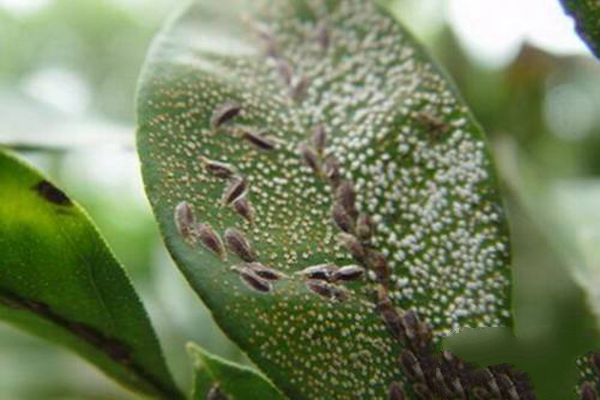Main damage modes of flower pests

In the last article, we introduced the common pests in the process of potted soil flower culture. We all know that pests do great harm to flowers, seriously threatening the reproduction, growth, flowering, fruiting and ornamental value of flowers. Nowadays, pests have become one of the main enemies of family flower cultivation and flower production. However, many flower lovers still can not accurately understand the harm of pests, so, how do pests "harm" flowers?
Generally speaking, the harm of pests to flowers can be divided into three aspects: feeding harm, non-feeding harm and spreading plant diseases.
1. Feeding hazard
Pests can directly damage the roots, stems, leaves, buds, fruits and seeds of flowers, forming different forms of damage. Due to the different mouthparts and feeding parts of insect pests, there are many ways of damage, which can be summarized as follows.
(1) eating by mouth
Pests eat the leaves to form notches, holes or eat up the leaves, leaving only petioles and veins, which seriously affect the growth, development and ornamental of flowers.
(2) nesting with rolled leaves or patched leaves
Leaf curl moth larvae often curl their leaves and hide them for food damage; Dendrolimus punctatus larvae spin silk and build nests, and feed in groups, causing leaves to curl and destroy the normal growth of tender shoots and leaves.
(3) latent leaf
The larvae feed on the leaves between the upper and lower epidermis of the leaves, forming a winding tunnel.
(4) drilling
Longicorn beetle larvae drill into a tunnel in the xylem of the branches of flowers and trees, causing food damage, and the flowers and trees age and die early after being victimized, as shown in the picture.
(5) puncture and aspiration
Chlorotic spots or yellowish-brown spots appeared on the injured site, tender leaves curled, fruit deformed, and even the whole plant withered.
(6) galls
Galls are formed in the roots, stems, leaves and other parts of the plant due to the invasion or oviposition stimulation of some pests, which affect the ornamental effect.
2. Non-feeding hazard
This kind of damage is often manifested in flowers and trees as spawning injury and soil drilling injury.
(1) oviposition injury
The adult cicada lays eggs in the tissue under the stem and branch epidermis, destroying the flower and tree transport tissue, causing branches and young trees to wither. The picture shows the eggs on the leaves.
(2) drilling injury
Mole cricket drilled in the soil to form many tunnels, so that the seedling roots were separated from the soil and died, resulting in a large number of lack of seedlings and dead seedlings.
3. Spread plant diseases
Many plant viruses are transmitted by pests. Wounds caused by pests open the door for certain pathogens to invade. In addition, honeydew from aphids, whiteflies, scale insects and other pests contaminate the leaves, which can easily lead to the occurrence of coal fouling disease.
- Prev

What kind of flowers are suitable for the balcony? Flowers suitable for raising on the family balcony
What kind of flowers are suitable for the balcony? Flowers suitable for raising on the family balcony
- Next

How to remedy the Garden Flowers after Typhoon
How to remedy the Garden Flowers after Typhoon
Related
- What if the leaves of potted flowers turn yellow?
- Florescence Control of several Flowers
- Anti-freezing technology and post-freezing nursing technology of flowers
- What is the classification of flowers? What are the common methods of flower classification?
- Prevention and control of alkali and acid damage of flowers in courtyard
- Technology of Anti-freezing and restoring growth of Flower seedlings in greenhouse and greenhouse
- How does flower fertilization not hurt the root? Fertilization technology of flowers
- Key points of disinfection in flower greenhouse
- Several pesticides that are banned or used cautiously in flowers
- How to fertilize the flowers that watch the leaves?

